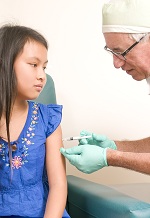The World Health Organization’s (WHO) advisory committee, the International Agency for Research on Cancer (IARC), decided that radio frequency (RF) electromagnetic fields (EMF) should be classified as a “Group 2B “possible” carcinogenic. These are non-ionizing EMFs that most physicists and many other experts world-wide regard as implausible, or at least highly unlikely, to be able to cause cancer. (Microwaves are usually regarded as a subset of radiowave frequencies.)
After thousands of studies, most EMF expert organizations maintain that the only plausible and proven (meaning indicated by the preponderance of credible evidence) potentially harmful effects of RF exposure are thermal (heat), upon which regulators base exposure limits with an abundance of caution.
The IARC’s conclusion appears to be focused on cell phone use, not base station cell phone antennas or other RF devices, such as TV, radio, baby monitors, remote controls, automatic doors, microwave ovens or so-called Smart Meters, etc. – all of which have been shown to create very low public RF exposure.
And even with that, their chairman only suggests a relatively light precautionary approach to cell phone use. The World Health Organization’s media release about the IARC conclusion states: (bolding is mine)
“Dr Jonathan Samet (University of Southern California, USA), overall Chairman of the Working Group, indicated that “the evidence, while still accumulating, is strong enough to support a conclusion and the 2B classification. The conclusion means that there could be some risk, and therefore we need to keep a close watch for a link between cell phones and cancer risk.”
“Given the potential consequences for public health of this classification and findings,” said IARC Director Christopher Wild, “it is important that additional research be conducted into the longterm, heavy use of mobile phones. Pending the availability of such information, it is important to take pragmatic measures to reduce exposure such as hands‐free devices or texting.”
The WHO, even after the IARC classification, assures the public that cell phones (and by extension, other RF devices of even lower exposure levels) are safe: “A large number of studies have been performed over the last two decades to assess whether mobile phones pose a potential health risk. To date, no adverse health effects have been established as being caused by mobile phone use.”
IARC Groups and examples, for perspective:
[bracketed comments are mine]
Group 1 – “Carcinogenic to Humans” (108 agents)
Examples:
alcoholic beverages (ethanol) [including some medicines or homeopathy]
tobacco smoke, second-hand smoke, smokeless tobacco
ionizing radiation (all types) – x-rays, gamma rays
ultra-violet radiation – UVA,UVB,UVC [part of sunlight] and UV tanning
art glass manufacturing
wood dust
Group 2A – “probable carcinogenic to humans” (64 agents)
Examples:
frying, emissions from high-temperature
working as a hairdresser or barber
hot mate [a beverage, not your partner ;-)]
shiftwork that involves circadian disruption [sleep disruption]
Group 2B – “possible carcinogenic to humans” (271 agents)
Examples:
coffee (urinary)
pickled vegetables
coconut oil diethanolamine condensate [used in soaps, hair products, etc.]
carpentry and joinery
nickel, metallic and alloys
magnetic fields, extremely low-frequency [emitted by all electric wiring and appliances]
radiofrequency electromagnetic fields [are ubiquitous – natural and manmade]
Group 3 – “not classifiable as to its carcinogenicity to humans” (505 agents)
electric fields (extremely low frequency or static)
Group 4 – “probably not carcinogenic to humans” (1 agent)
Caprolactam
Group 5 – Not carcinogenic – Oh wait, there is no Group 5. It appears that the IARC does not intend to classify any agents as non-carcinogenic, which is what anti-EMFers would likely insist upon before regarding radiowaves as safe.
Knowing that the IARC’s carcinogenicity continuum ranges from non-carcinogenic –> probably –> possibly –> who knows? (my words) –> probably not, and further noticing that only one agent out of nearly 1000 agents analyzed has been placed in the Group 4 improbable category, tells us that the media headlines that the WHO decided radiowaves can possibly cause cancer are alarmist.
“Possible” means different things to scientists than to the general public. To a scientist, it means theoretically and logically possible as opposed to impossible. It’s a very low ranking as to the truth of a matter. The next steps up the ladder of probability that something is true are: plausibly and then probably and then “proven” (meaning it is so likely to be true that we take the liberty of saying it’s proven, even as nothing is cast in stone). This continuum has been termed “the four Ps”.
To the lay public, the IARC using the word possible means they (the experts) found out that radiowaves do, in fact, cause cancer. To illustrate: if a patient asks her doctor, “do you think my cancer was caused by radiowaves?” and her doctor answers, “possibly,” most patients would hears that as a definite maybe, up there with something like smoking. This was clearly not the IARC’s intent.
Appears to me that the IARC intended to convey that they couldn’t rule out the literal possibility that radiowaves can cause cancer without additional studies, such as on longer-term use of cell phones . Had they gone with “unclassifiable,” I can see the headlines: “The WHO doesn’t know if radiowaves are carcinogenic or not!”
Recommended links:
“Toward a general theory of pathological science” by Nicholas J. Turro, PhD. [Describes “the four P’s” of science.]
Kovvali G. Cell phones are as carcinogenic as coffee. J Carcinog [serial online] 2011 [cited 2012 Jun 21];10:18.
CNN Health. “Coffee, pickled veggies also ‘possibly’ cause cancer“. June 2011.
“IARC Press Release – Cell Phones Possible Carcinogenic,” article at EMFandHealth.com
Are Cell Phones a Possible Carcinogen? An Update on the IARC Report, by Lorne Trottier, published on Sciencebasedmedicine.org, April 2012.
WHO press release, May 2011, “IARC CLASSIFIES RADIOFREQUENCY ELECTROMAGNETIC FIELDS AS POSSIBLY CARCINOGENIC TO HUMANS”
“Electromagnetic fields and public health: mobile phones” World Health Organization Fact sheet N°193, June 2011




You must be logged in to post a comment.